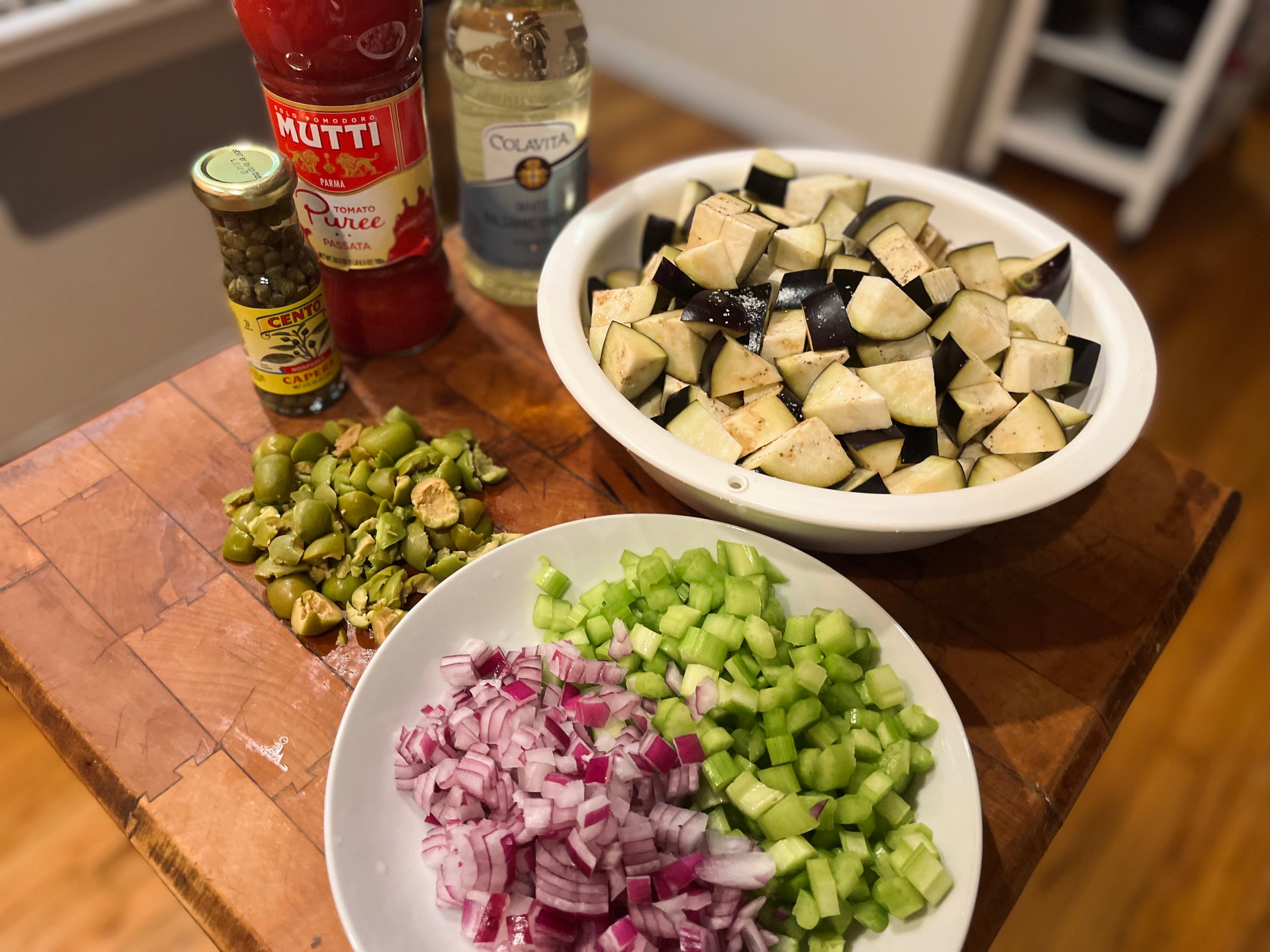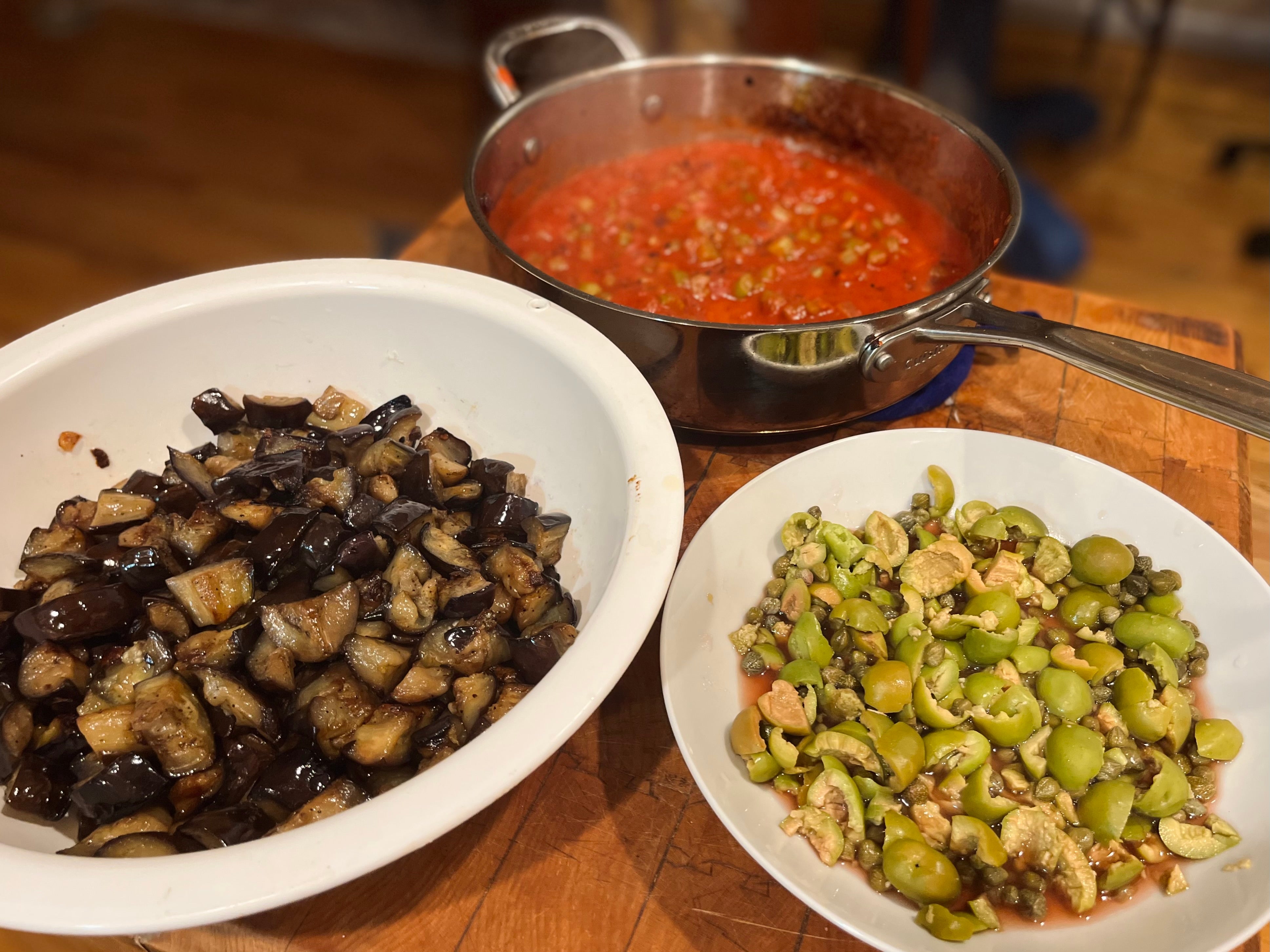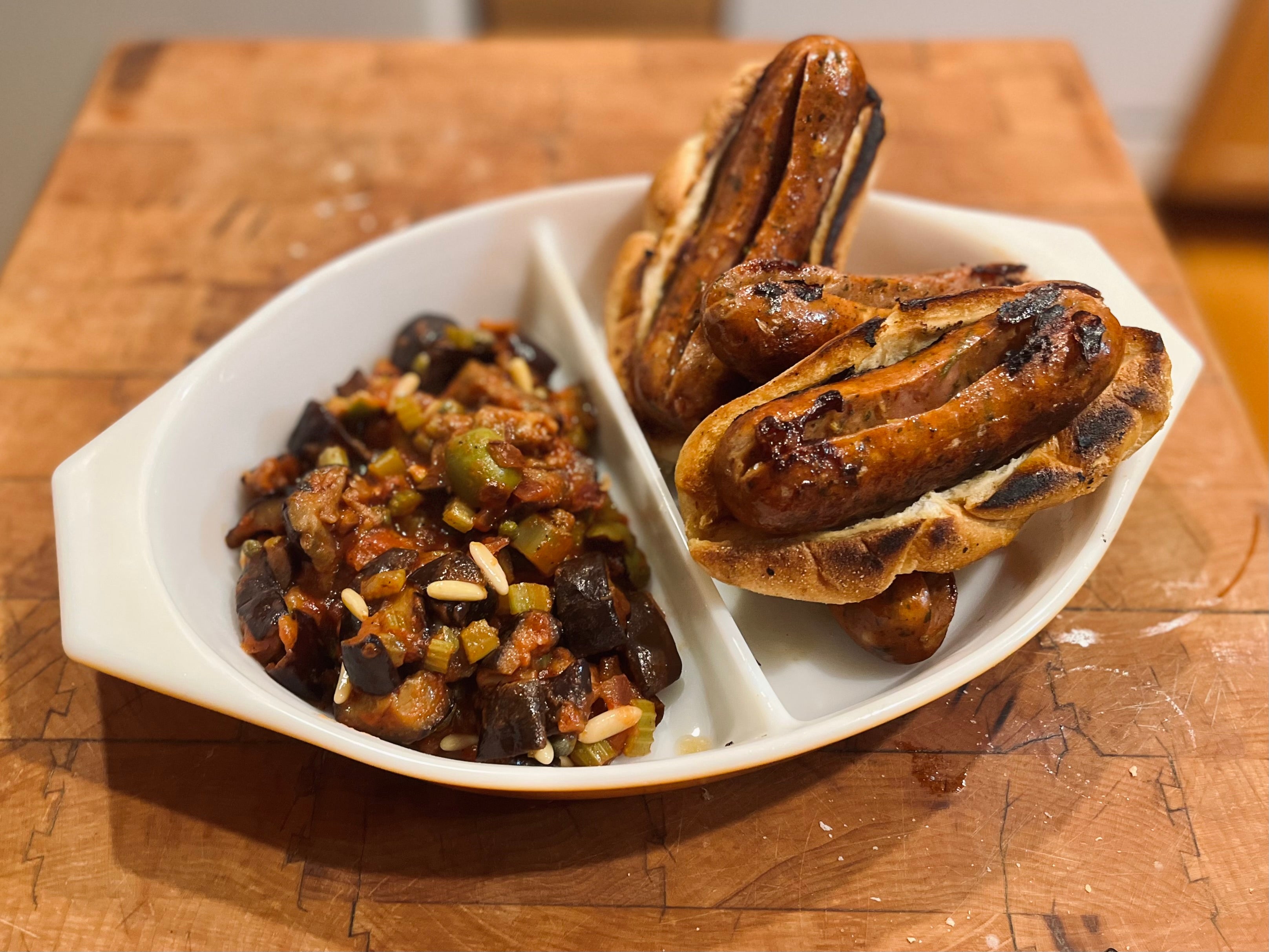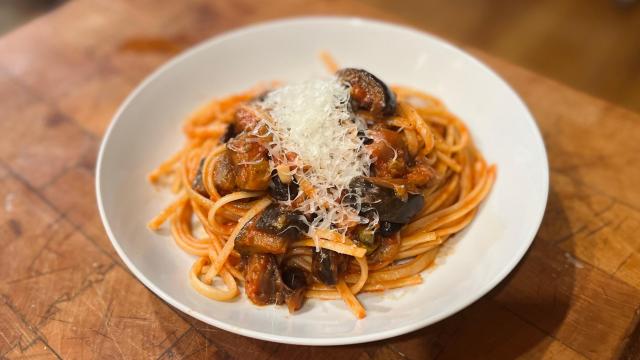Eggplant peaks from summer to early autumn, when it can still be harvested young — after that, we’re left with imported, waterlogged stragglers in the produce aisle. So I urge you: Celebrate eggplant now with one of Sicily’s finest concoctions.
Caponata is an antipasto that consists of fried eggplant, celery, onions, olives, and capers. Everything is cooked together in a way that isolates and accentuates the best flavours of each ingredient. Toss that all together in a sweet and tangy tomato sauce, and you have a beloved Sicilian staple that’s also a collage of the various cultures that have left an imprint on the island.
What’s so great about caponata?

For Sicilians, caponata is serious business — some readers will say that I have already gotten the description wrong by omitting peppers, pine nuts, or raisins. That’s because, despite the simplicity of caponata, there are a staggering number of recipes for the dish, originating from places all over the island — from Palermo, Catania, Messina, and Argento–and even more varying recipes from household to household.

Throughout history, Sicily was repeatedly conquered by various civilizations, such as the Normans and Arab empires, which left a lasting footprint behind. As a result, one of the most incredible things about Sicily is how the array of cultures have influenced its cuisine. In caponata alone, you have the Greek olive, the Italian tomato, and the Arabic influences of agrodolce and (sometimes) raisins, that stand both on their own and coexist together in a sweet, spicy, vibrant compote. But above all, it’s an edible metaphor and constant reminder of Sicily’s diverse history.
How to serve Caponata

Caponata is typically served as an appetizer eaten on its own or with bread, but it’s incredibly versatile. Spoon it over toasted bread like a bruschetta. Layer it on a sandwich. Toss it with fresh pasta and a generous helping of shaved cheese — ricotta insalata is a great choice and one that’s most common with pasta Alla Norma, but you can never go wrong with parmesan. It’s also a great acidic balance as a side for grilled fish or other meat.
But my personal favourite pairing might be caponata and sausage. Of all the ways that caponata can be consumed, its function as a condiment can be the most fun. After all, tomato puree, sugar, and vinegar are the core ingredients for ketchup, and the elements that bring out the agrodolce flavours in caponata.
How to make Caponata (at least one version of it):
Ingredients:
- 5 small Italian eggplants or two large eggplants, cut into 1-inch cubes and left unpeeled
- 1 small red onion
- 2-3 celery sticks, diced
- 1 cup passata or tomato purée
- 1 cup pitted and halved Castelvetrano olives
- 3 tablespoons white wine vinegar
- 6 basil leaves
- 1 tablespoon capers (preferably in sea salt)
- 1 tablespoon pine nuts
- 1 tablespoon brown sugar
- 1 cup grapeseed oil
- 2 tablespoon olive oil
- 2 garlic cloves, crushed
- Salt, pepper, and red pepper flake to taste
Heavily salt your cubed eggplant, preferably a half an hour before frying to sweat out the excess water. Heat a generous glug of grapeseed oil in a skillet. (Traditionally, extra virgin olive oil is used for frying, but because eggplant absorbs oil like a sponge, the high smoke point of grapeseed oil helps to beautifully brown the eggplant without getting absorbed too quickly.) Fry until the eggplant is translucent and nicely browned, then set aside.
In a separate pan or skillet, heat olive oil and add crushed garlic and a generous pinch of red pepper flake to let the oil absorb the flavours. Then add onion and celery and cook until cooked through and translucent, about five to 10 minutes on medium heat. Add the passata or tomato purée to the onion and celery and salt to taste, letting the sauce simmer for 10-15 minutes.
At this point, all of our separately cooked (and uncooked) ingredients are brought together. Remove the sauce from heat and add the fried eggplant, olives, capers, and all other remaining ingredients. Then mix and return the caponata to the stove, letting it simmer for about ten minutes before cooling to room temperature and transferring to the fridge to let the flavours meld. The real key to caponata is letting it chill in the refrigerator overnight before serving at room temperature. That said, you won’t be disappointed if you sneak a bite beforehand.

Leave a Reply
You must be logged in to post a comment.